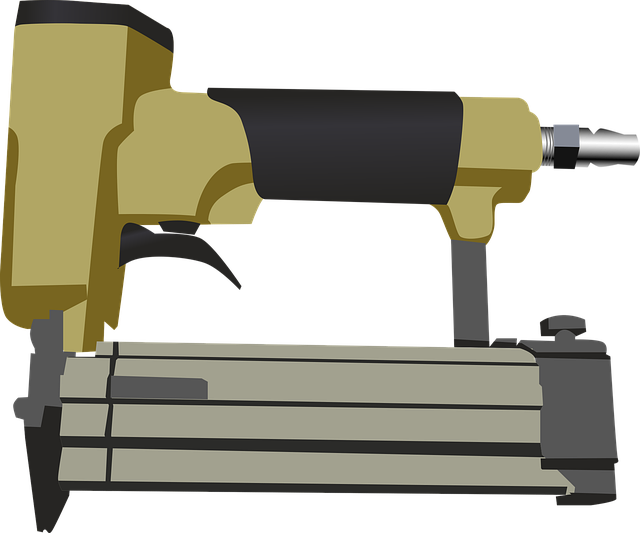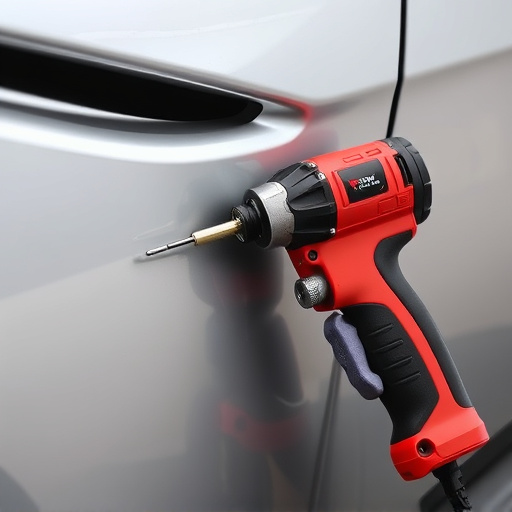Mercedes THERMOTRONIC repair involves meticulous diagnosis of compressor control faults through code checks, electrical analysis, and connection inspections. Repairs include component inspection, debris removal, part replacement, reassembly, and vacuum testing for optimal thermal management system performance. Professional auto repair services ensure passenger comfort and vehicle reliability by addressing these complex issues comprehensively.
Mercedes THERMOTRONIC systems are renowned for their precision climate control, making them a cornerstone of modern vehicles. However, compressor control faults can disrupt this comfort, requiring expert repair. This comprehensive guide delves into the basics of the Mercedes THERMOTRONIC system, equips you to diagnose common issues, and provides a step-by-step approach for successful repairs. Discover how to navigate the intricate components and ensure optimal performance for your Mercedes climate control system.
- Understanding Mercedes THERMOTRONIC System Basics
- Diagnosing Compressor Control Faults Effectively
- Step-by-Step Guide to Successful THERMOTRONIC Repair
Understanding Mercedes THERMOTRONIC System Basics
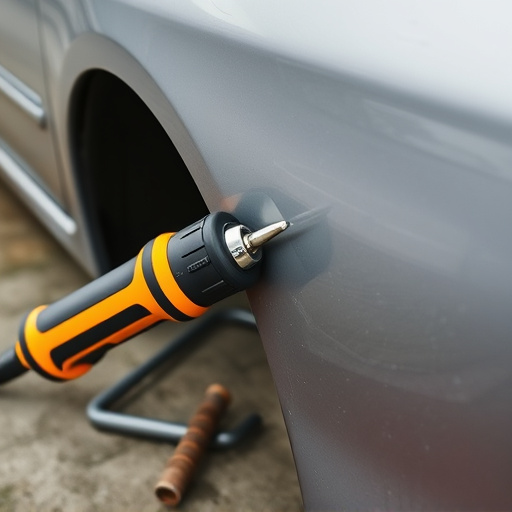
The Mercedes THERMOTRONIC system is a sophisticated climate control mechanism designed to maintain optimal cabin temperatures in luxury vehicles. At its core, it involves a series of components working in harmony, including a compressor, evaporator, condenser, and expansion valve. These parts collaborate to circulate refrigerant gas, facilitating heat absorption and discharge within the vehicle’s interior. A key component is the compressor, which compresses the refrigerant gas, raising its temperature and pressure before it circulates through the system.
When addressing Mercedes THERMOTRONIC repair after a compressor control fault, understanding this intricate system is crucial. Such faults can stem from various issues, such as refrigerant leaks, worn-out components, or electrical problems affecting the compressor’s operation. Proper diagnosis involves scrutinizing connections, checking for leaks, and assessing electrical systems related to the compressor. Efficient car collision repair or general car bodywork and car paint services not only fix visible damage but also ensure the underlying thermal management system functions optimally, enhancing passenger comfort and vehicle reliability.
Diagnosing Compressor Control Faults Effectively
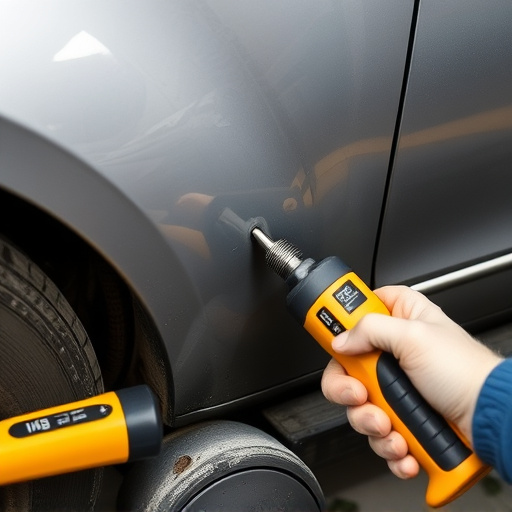
Diagnosing compressor control faults in Mercedes THERMOTRONIC systems is a meticulous process that requires precision and expertise. Auto repair services specialists must approach this task with a systematic methodology to ensure accurate identification of the issue. The first step involves checking for any codes stored in the vehicle’s computer, which can provide valuable insights into potential problems. By utilizing advanced diagnostic tools, technicians can analyze electrical signals and sensor data related to the compressor control module. This method allows them to pinpoint specific components or circuits that might be malfunctioning.
Additionally, a thorough inspection of the car body restoration should include examining connections for any signs of damage, corrosion, or loose wires. These visual cues could indicate issues with power supply or signal transmission. With these steps in place, auto repair shops can effectively isolate and resolve compressor control faults, ultimately facilitating a reliable Mercedes THERMOTRONIC repair process.
Step-by-Step Guide to Successful THERMOTRONIC Repair
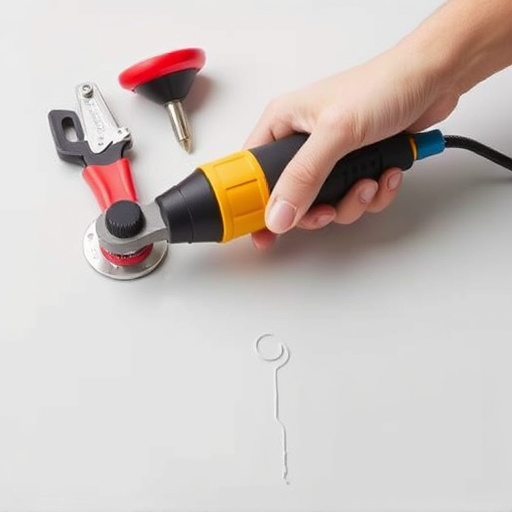
Repairing a Mercedes THERMOTRONIC system after a compressor control fault requires a systematic approach. First, locate and inspect the affected components, paying close attention to the compressor, condenser, and evaporator coils. This visual assessment will help identify any damage or debris obstruction.
Next, follow these steps:
1. Dismantling: Carefully take apart the faulty parts, ensuring proper documentation for future reference.
2. Cleaning: Thoroughly clean all components using specialized solvents to remove any buildup or contaminants that may have contributed to the fault. This process is crucial as even a tiny dent or scratch (requiring body shop services) can impact performance.
3. Testing: Use diagnostic tools to check for power and ground connections, voltage levels, and current flow. Addressing any issues at this stage prevents further complications.
4. Replacement: If necessary, replace the compressor, ensuring it’s a genuine Mercedes part. The same goes for other critical components like the control module.
5. Reassembly: Put the system back together, following the disassembly sequence but in reverse. Double-check connections and alignment to prevent future faults.
6. Vacuum Testing: After reassembly, perform a vacuum test to ensure the system’s integrity and identify any leaks that could have developed during repair.
Mercedes THERMOTRONIC systems, with their intricate compressor control mechanisms, require meticulous diagnosis and repair. By understanding the system’s basics, effectively diagnosing faults, and following a structured repair guide, car enthusiasts can successfully address compressor control issues. Armed with knowledge and the right approach, Mercedes THERMOTRONIC repair becomes a manageable task, ensuring these advanced climate control systems function optimally once more.
